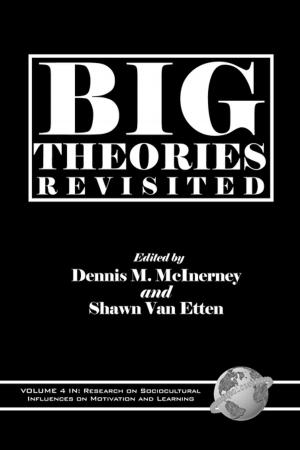Hitler's Ideology
Embodied Metaphor, Fantasy and History
Nonfiction, Reference & Language, Education & Teaching, History| Author: | Richard A. Koenigsberg | ISBN: | 9781607528784 |
| Publisher: | Information Age Publishing | Publication: | December 1, 2007 |
| Imprint: | Information Age Publishing | Language: | English |
| Author: | Richard A. Koenigsberg |
| ISBN: | 9781607528784 |
| Publisher: | Information Age Publishing |
| Publication: | December 1, 2007 |
| Imprint: | Information Age Publishing |
| Language: | English |
(Originally published as: Hitler's Ideology: A Study in Psychoanalytic Sociology) Why did Hitler initiate the Final Solution and take Germany to war? Based on analysis of Hitler’s rhetoric—the words, images and metaphors contained within his writing and speeches—Koenigsberg’s study reveals the “hidden narratives” that were the source of Hitler’s ideology and the Holocaust. Koenigsberg’s book was the first to study political rhetoric from the perspective of embodied metaphor. Conceiving of the Jew as a “force of disintegration,” parasite, and as a bacteria within the German body politic, the Final Solution represented a struggle to destroy the source of Germany’s disease—and thereby to save the nation. Hitler often is thought of as an anomaly. Koenigsberg’s classic study demonstrates that Hitler acted based on the conventional ideology of nationalism: devotion to one’s nation and a desire to destroy its enemies; willingness to die and kill—to sacrifice lives—in the name of a sacred object. Hitler’s actions—the history he created—followed as a logical consequence of the ideology that he promoted. Hitler imagined that by destroying the Jewish disease—source of death—Germany might live forever. The Final Solution grew out of a fantasy about an immortal body (politic). Richard Koenigsberg received his Ph.D. in Social Psychology from the Graduate Faculty of the New School for Social Research. He has been writing and lecturing on Hitler, Nazism and the Holocaust for nearly forty years. Formerly a Professor of Behavioral Science, he presently is Director of the Center for the Study of War, Genocide and Terrorism. His online writings have generated excitement throughout the world.
(Originally published as: Hitler's Ideology: A Study in Psychoanalytic Sociology) Why did Hitler initiate the Final Solution and take Germany to war? Based on analysis of Hitler’s rhetoric—the words, images and metaphors contained within his writing and speeches—Koenigsberg’s study reveals the “hidden narratives” that were the source of Hitler’s ideology and the Holocaust. Koenigsberg’s book was the first to study political rhetoric from the perspective of embodied metaphor. Conceiving of the Jew as a “force of disintegration,” parasite, and as a bacteria within the German body politic, the Final Solution represented a struggle to destroy the source of Germany’s disease—and thereby to save the nation. Hitler often is thought of as an anomaly. Koenigsberg’s classic study demonstrates that Hitler acted based on the conventional ideology of nationalism: devotion to one’s nation and a desire to destroy its enemies; willingness to die and kill—to sacrifice lives—in the name of a sacred object. Hitler’s actions—the history he created—followed as a logical consequence of the ideology that he promoted. Hitler imagined that by destroying the Jewish disease—source of death—Germany might live forever. The Final Solution grew out of a fantasy about an immortal body (politic). Richard Koenigsberg received his Ph.D. in Social Psychology from the Graduate Faculty of the New School for Social Research. He has been writing and lecturing on Hitler, Nazism and the Holocaust for nearly forty years. Formerly a Professor of Behavioral Science, he presently is Director of the Center for the Study of War, Genocide and Terrorism. His online writings have generated excitement throughout the world.















